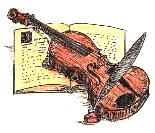 |
Discovering and Developing Talents © 2002 Stephen Holland HiddenTalents.org |
1 - Explaining Color Deficiency 2 - Traditional Tests 3 - Holland's Online Tests 4 - Percent Test 5 - Brown Test - Results 6 - Color Pencils- Results 7 - Art Test 8 - Thread Test for Children |
| 4. Red and Green % Test |
|
Common tests do not distinguish well between
red and green deficiencies. This is an experimental
test which works for some people with stronger
deficiencies.
% of Red Vision No RED vision means the world looks more blue-green. Red helps the brain create yellow-greens and yellows. Weakness in red usually means the eye has trouble distinguishing greens from yellow-greens The inner boxes are all pure green. The ten outer squares create yellow by adding red. How well can you distinguish the inner box? Good RED vision means you can see slight differences in YELLOW-GREEN hues.(Look for difference in color, not just brightness)  (For techies, the HTML color code I use is printed at the top) % of Green Vision No GREEN vision means the world looks more blue-red orp purplish. Green helps the brain create yellows and oranges from reds. Weakness in green usually means the eye has trouble distinguishing reds, oranges and yellows. The inner boxes are all pure red. The outer square creates yellow by adding green. How well can you distinguish the inner box? Good GREEN vision means you can see slight differences in RED-ORANGE hues
|